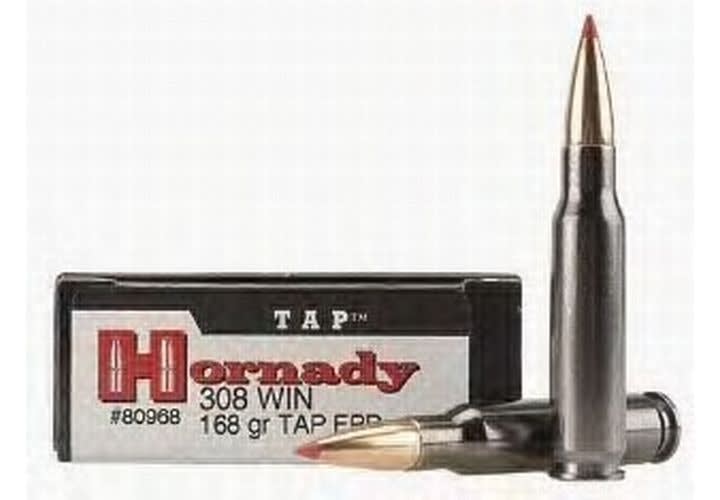As a result, when these applications are attempted with the .223, a need for multiple follow-up shots would place law enforcement and civilians in danger. Among officers, it's commonly accepted that whatever ends the engagement quickly and soundly is the best option.
Enter the .308 Winchester that's more commonly known as the .308 Winmag (winchester magnum). When the cartridge was introduced in 1952, the goal was to take a winning cartridge such as the .30-06 used during World War II in the M1 Garand and shorten it down, while still retaining much of the .30-06 punch. It's now widely used by hunters for deer, bear and other larger game, and soldiers on the battlefields of Iraq and Afghanistan, where it's known as the 7.62x51mm NATO round.
The formula for success is simple, you have a cartridge with a relatively short case that's packed with a high-pressure (about 60,000PSI) load and heavy bullet (150-180 grains) that travels at about 2,800 feet per second. Compare that to the same velocity as the .223, but the .223 bullet is less than half the weight (50-70 grains). The dramatic increase in the amount of kinetic energy that can be delivered on target should now be obvious. A heavier bullet at the same speed will do a lot more damage.
Since the .308 is relatively compact compared to longer cartridges such as the .30-06, its ability to be chambered in smaller platforms such as an AR-type carbine, M14 style SOCOM or bullpup (such as the Kel-Tec RFB) is easy to accomplish. This results in rifle platforms that can be easily chambered for 10 to 20 rounds per magazine. Such a rifle can deal with any threat at virtually any range and, as mentioned above, end the threat quickly and decisively.
The evolution in ammunition selection for the .308 for law enforcement has been no less revolutionary. We now have bonded-bullet ammunition that can penetrate most media, while retaining 99 percent of the bullet's weight with almost no bullet deformation upon entry and exit.













